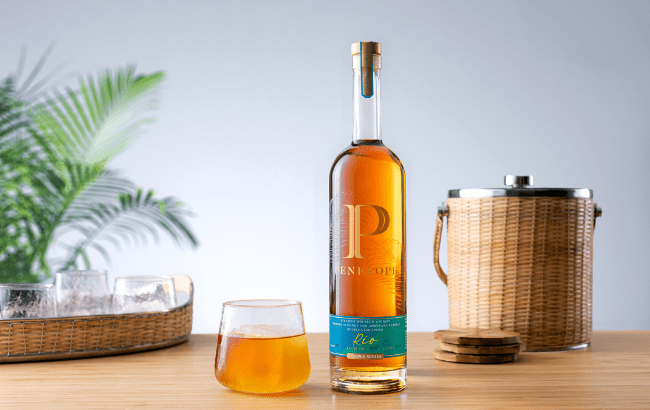Bussiness
World Spirits Report 2024: American whiskey – The Spirits Business

There has been a growing notion in American whiskey that the ‘Bourbon bubble’ was bound to burst. Constant growth and expansion wasn’t sustainable, and now, as the market evens out, and pandemic‐related purchasing trends slow, there are signs of what that market contraction looks like.

In November, MGP Ingredients announced that in 2025 it would be reducing production, instead focusing on its branded‐spirits business. For years, as the Bourbon industry boomed, nascent brands would turn to MGP and other industrial‐scale distilleries to purchase wholesale whiskey to get to market faster. But now, American whiskey finds itself overindexed.
“There is consolidation coming in the market, and it’s happening now,” Luis Gonzalez, CEO of Old Elk Distillery, says. Old Elk is a non‐distillery producer, or NDP, that contract‐distils with MGP using custom mash bills. Establishing a distinct identity is key for NDPs and other non‐legacy brands in today’s whiskey landscape.
“Even though there’s more whiskey out there than ever before, it feels like there’s not all that much product differentiation between a lot of the NDPs,” says Lost Lantern co‐founder Adam Polonski. The brand is a Vermont‐based independent bottler, which, similarly, purchases barrels from producers, though more niche and curated.
Through conversations with producers across the country, Polonski says the feeling is that people are still buying whiskey, though perhaps not as much as they once were. The equation, he says, has changed on the production side so that distillers that were previously holding stock are now selling. Distillery expansions and production cycles accounted for a growing demand that has since tailed off.
“A tonne of places made decisions that were individually rational for them to double or triple their production, but everyone did that and at the same time, and then that leads to a tremendous amount of whiskey coming on the market,” Polonski says.
At the same time, a number of new distillery projects have launched, focusing on contract production. In July Caleb Kilburn and Cordell Lawrence broke ground on Eastern Light Distilling, while in the same month Whiskey House of Kentucky began production. David Mandell founded Whiskey House of Kentucky in 2022 as a large‐scale, flexible contract distillery after previously founding Bardstown Bourbon Company, which was built on a similar concept.
“Quality is essential, but innovation is key,” Mandell says of how NDPs can stand out. “In many instances, there was a rush to create ‘unsophisticated capacity’ or the construction of rudimentary distilleries designed to quickly produce very average whiskey products.”
As former Garrard County Distilling’s master distiller Lisa Roper Wicker puts it, good money follows good whiskey, and she is hopeful for the category’s prospects. “If you have a solid story and you’re authentic about what you’re doing, and you’re smart about how you enter the market right now with a thoughtful, realistic business plan, I don’t think it’s a bad time to start a brand,” Wicker says. “I like to say the bubble is deflating and not bursting.”
Euromonitor data expects American whiskey volumes to end 2024 marginally higher than 2023 at 53.3 million cases, up from 52.5m.
SirDavis


In August Beyoncé Knowles‐Carter moved into spirits with SirDavis, a Sherry‐finished straight rye whiskey made in collaboration with Moët Hennessy and whisky maker Dr Bill Lumsden. As with all things Beyoncé, the whisky made a grand entrance, but can it sustain enough buzz to shed its celebrity box, capture imaginations, and bring new drinkers into the space?
Westland


Seattle’s Westland Distillery released a pair of cask‐finished whiskies in August and followed that with the ninth edition of its native oak Garryana series in November. The distillery experienced the busiest day in its 14‐year history when more than 500 fans attended the Garryana launch. As American single malt continues to push for a legal definition, Westland continues to advance and advocate for the category via well‐crafted whiskeys.
Penelope


MGP purchased Penelope Bourbon in May 2023, and in its third‐quarter financial report, it shared that the fair value of the contingent liability related to the acquisition had increased by US$2.2 million compared with the third quarter of 2023. If MGP is indeed focusing on its branded spirits portfolio, expect Penelope to receive some of that emphasis.
Related news
Luxco’s Michele Reina shares American whiskey insights









